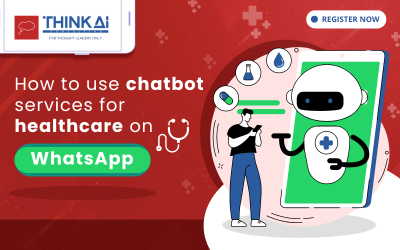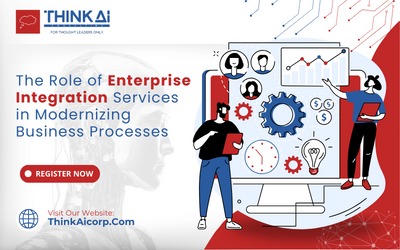Have you ever wondered what happens to all those medical scans and tests you get? All that data has to go somewhere, right? Well, it goes into the massive data banks of healthcare organizations and imaging centers. But now, thanks to advances in data analytics and machine learning, that data can be used for so much more than just storing your personal health records.
Your MRI, CT, and X-ray scans contain a goldmine of information that artificial intelligence systems can analyze to detect health issues faster and more accurately than ever before. Read on to learn how data analytics is transforming medical imaging and diagnosis to improve patient outcomes. The innovative ways doctors are using big data and AI will blow you away.
Let’s get started!
The Evolution of Medical Imaging and Growing Data
The medical imaging field has evolved tremendously over the past few decades. As technologies like CT, MRI, and PET scans were introduced and adopted, the amount of data produced skyrocketed. A single CT scan can generate over 1,000 images, and the average large hospital now produces over 50 petabytes of data each year.
The Rise of AI and Analytics
To make sense of this massive amount of information, healthcare providers have turned to artificial intelligence and analytics. Machine learning algorithms can detect patterns and insights that humans may miss. Analytics tools are helping radiologists diagnose conditions more accurately and detect diseases earlier. For example, AI systems can analyze CT scans to diagnose a stroke, detect signs of Alzheimer’s in brain scans years before symptoms appear, or spot lung cancers in X-rays with greater accuracy than human radiologists.
AI and analytics are also making medical imaging more efficient. Systems can automatically label, sort, and prioritize scans to reduce the time radiologists spend on routine tasks. Radiologists then have more time to focus on complex cases. AI tools can also suggest possible diagnoses or areas of concern on a scan to help guide the radiologist.
While AI and analytics will not replace radiologists, they are transforming medical imaging. Radiologists working with these advanced tools have access to insights that can help improve care, reduce errors, and change medical outcomes for the better. The future of diagnostic imaging is data-driven, and AI and analytics are helping unlock the potential of all that data to benefit patients and physicians.
How Analytics Is Transforming Medical Imaging
These days, medical imaging is so much more than just capturing pictures of the human body. Thanks to advanced analytics, radiologists and physicians can now gain the following insights to help improve patient diagnosis and care.:
Detecting Disease Earlier
Analytics allows radiologists to compare scans to detect even the smallest changes over time. This helps spot disease progression much earlier, even before symptoms appear. For example, by comparing brain scans from year to year, doctors can detect signs of Alzheimer’s disease or other dementias far sooner.
Personalized Treatment Plans
By analyzing a patient’s scans and medical history along with those of similar patients, doctors can develop customized treatment plans tailored to their needs. For instance, analyzing lung CT scans from thousands of people with similar cancers helps oncologists determine the therapy most likely to benefit a specific patient based on subtle differences in their tumors.
AI-Assisted Diagnosis
Artificial intelligence and machine learning tools help radiologists analyze scans faster and more accurately. AI systems can detect patterns that humans might miss, helping diagnose conditions like pneumonia, stroke, or fractures. Some tools even suggest possible diagnoses and highlight areas of concern on the scans. While AI won’t replace radiologists, it makes them much more efficient and helps reduce errors.
Continuous Monitoring
New wearable and implantable sensors generate ongoing data that, when combined with analytics, enable continuous patient monitoring without frequent office visits or scans. For example, sensors can track vital signs, activity levels, and other metrics in people with chronic heart failure, Alzheimer’s, or Parkinson’s and alert doctors to changes that may require intervention.
Analytics is transforming medical imaging into a powerful tool for precision diagnosis, treatment, and monitoring. By unlocking insights from imaging data, analytics helps doctors provide the right care at the right time for every patient. The future of healthcare will rely on these kinds of intelligent, data-driven approaches.
Key Areas Where Analytics Is Improving Imaging Workflows
Analytics is revolutionizing imaging in healthcare by turning raw data into actionable insights. Three key areas seeing major improvements are:
Workflow optimization
By analyzing historical imaging data, systems can predict how resources are utilized and find ways to streamline the process. For example, AI may determine the optimal scheduling approach to minimize wait times and maximize scanner usage. It can also automatically pre-fetch patient data and reports to save staff time.
Enhanced diagnostics
Computer-aided detection (CAD) tools analyze scans to identify possible abnormalities, like tumors or lesions, that radiologists may have missed. CAD acts as a second set of eyes to ensure the most accurate diagnosis. It is particularly useful for complex or subtle cases.
Personalized care
In the future, AI and analytics may tap into a patient’s full medical history, genetics, lifestyle habits, and more to develop customized diagnosis and treatment plans tailored to their unique needs. For example, certain biomarkers or characteristics identified in a patient’s MRI or CT scan could indicate a higher risk of disease or better response to specific therapies. Physicians can then make precision medicine decisions based on data-driven insights.
Some Real-world Case studies
Case studies show how analytics applied to medical imaging data is transforming diagnosis and treatment:
Stanford University: Lung Cancer Detection
A study from Stanford University analyzed CT scans from patients at high risk of lung cancer using a deep learning algorithm. The AI system detected lung nodules that radiologists had missed, identifying lung cancers at an early, more treatable stage. Early detection of lung cancer can improve 5-year survival rates from under 20% to over 90%.
Harvard and MIT: Tailored Treatment Plans
Researchers at Harvard and MIT developed a machine learning model analyzing MRI scans that can predict how individuals will respond to certain cancer treatments. The model analyzes tumor shape, texture, and location to determine who will benefit from chemotherapy before starting treatment. This “precision oncology” approach helps doctors create tailored treatment plans for each patient.
University of California: Eliminating False Positives in Medical Imaging
False positives in medical imaging often led to unnecessary follow-up tests and procedures that are costly and stressful for patients. A study from the University of California, San Francisco used a deep learning model to analyze mammograms. The AI system reduced false positive rates by up to 85% while still detecting breast cancers with high accuracy. Decreasing false positives in mammography and other screening tools may make these tests more efficient and less anxiety-provoking for patients.
In these examples and others, machine learning and data analytics are making medical imaging smarter, faster, and more accurate. As the field progresses, AI promises to boost the early detection of disease, personalize diagnosis and treatment, reduce errors, lower costs and ultimately improve patient outcomes.
The future of healthcare will be driven not just by new technologies but by innovative use of the massive amounts of data already at our fingertips. Analytics is transforming that data into life-saving knowledge.
The Importance of Data Security and Privacy with Healthcare Analytics
When it comes to healthcare data and analytics, the utmost priority lies in ensuring privacy and security. Patients entrust their healthcare providers with intimate details about their health and lives, expecting a commitment to the confidentiality of this information. Following robust measures must be in place to safeguard privacy:
Protecting Patient Data
Healthcare organizations have a legal and ethical obligation to keep patient data private and secure. Strict data governance policies and security measures must be put in place to protect sensitive information from unauthorized access or misuse. Strong encryption, multi-factor authentication, and restricting data access to only those who truly need it are essential safeguards.
Regular audits and risk assessments help identify and address any vulnerabilities. If a data breach were to occur, healthcare providers must have response plans ready to act quickly to contain the incident, determine what information was compromised, and notify any patients that may have been affected.
Building Trust
For patients to feel comfortable sharing their health data, they need to have confidence in how it’s handled and used. Transparency about data collection, storage, access, and analytics policies helps build that trust. Patients should understand who sees their data, and for what purposes, and be assured it will only be used to benefit their care. They must also maintain some control over their data, with options to opt out of certain data uses if desired.
When data is used responsibly and for the right reasons, analytics can transform medical care and improve patient outcomes. But with sensitive health information, privacy and security will always need to come first.
Healthcare organizations must earn and maintain the trust of their patients through accountability, transparency, and a steadfast commitment to safeguarding data. The benefits of healthcare analytics depend on it.
Conclusion
So, in the end, advancements in medical imaging and health data are completely changing the game for doctors and patients. Artificial intelligence and machine learning are helping radiologists detect diseases earlier and more accurately, while also improving workflow and productivity.
The future is bright if we continue to adopt modern technologies, invest in research, and prioritize data sharing across healthcare organizations. With data-driven insights, doctors have a chance to provide personalized treatment plans tailored to each patient’s needs. The impact of analytics in healthcare imaging is creating a healthier future for us all.
Discover the transformative impact of #DataAnalytics on healthcare imaging by subscribing to this newsletter. Gain valuable insights into how innovative technologies are reshaping diagnostics, treatment plans, and patient outcomes.
Connect with professionals, share experiences, and stay informed about the latest trends. Don’t miss out on shaping the future of healthcare— ‘Subscribe’ now and empower yourself with the knowledge that matters.
🚀 #HealthcareInnovation #AnalyticsTrends #MedicalImaging #HealthTech

Empowering Healthcare & Smart Manufacturing CXOs | Transforming Challenges into Growth Opportunities with Data-Driven AI Innovation | Microsoft Gold Partner with 30+ years in Data and AI Strategy | #Inc5000 Honoree




